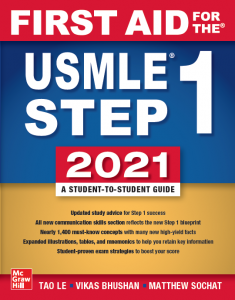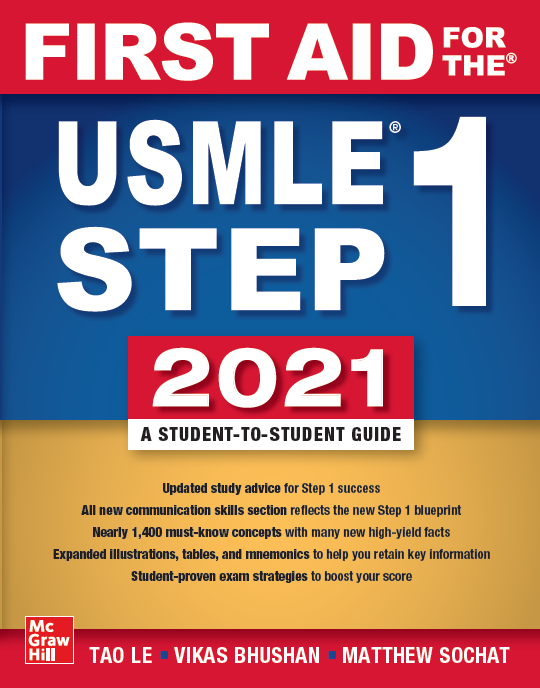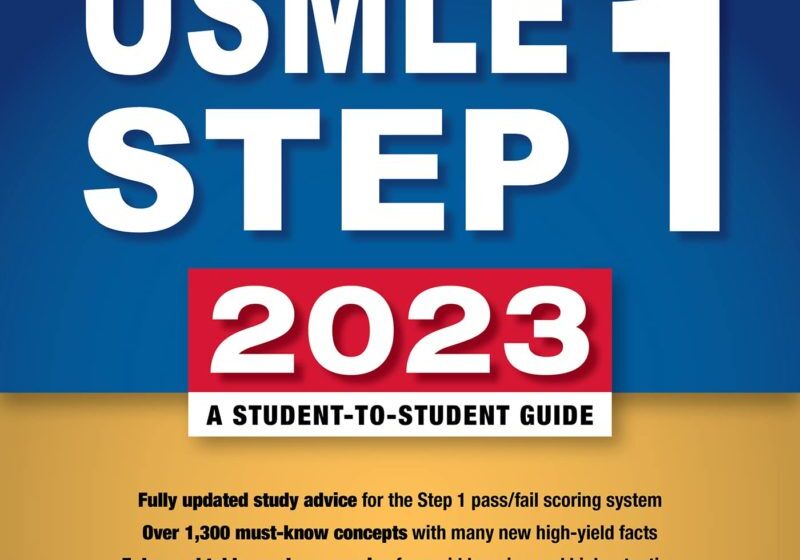
What can be said about First Aid for the USMLE Step 1 that hasn’t already been already said by scores of medical students? As one of the many students who have used First Aid noted — “Simply put, you can’t study for Step 1 without First Aid”. It is the top resource for preparing for the USMLE Step 1 because it includes everything you need to know to pass.
The new 2021 edition is the most updated revision yet. In fact, you’ll find new information on content recently added to the exam, like communication skills.
To give you a sense of why we consider this new edition so important, we’re including the Foreword here, which you can also find on our Bonus page.
“If you see something that is not right, not fair, not just, you have a moral obligation to do something.”
Congressman John Lewis
First Aid for the USMLE Step 1 began over 30 years ago as a resource to prepare aspiring physicians for their first medical board exam. Since then, it has become one of the most well-known textbooks used by medical students worldwide. While we closely follow the USMLE’s lead in most respects, the widespread use of our book also provides an opportunity for us to be leaders in medical education.
In prior editions, there has been an unfortunate absence of diversity in both the text and images. This year, we strongly affirm that representing a broad spectrum of patients is essential for preparing for a successful medical career. The practice of medicine is inextricably intertwined with social determinants of health, and sociocultural understanding complements scientific knowledge for the future physician. Failing to provide representation of a diversity of people limits the educational experience and is to the detriment of future patients. We here describe our approach to improving the representation of race, ethnicity, sex, and gender, recognizing that we are neither experts nor authorities on diversity, equity, and inclusion.
We first surveyed our existing visual depictions of patients and pathologies. Of nearly 70 illustrations showing skin tone or sex in the 2020 edition, every single one showed pink/light beige skin, and all but one was male-appearing, excluding reproductive anatomy illustrations. To address this lack of diversity, we revised our illustrations to better reflect Fitzpatrick skin types I-VI and introduced more female-appearing and gender-neutral illustrations.
We also reviewed our use of language in the text. With respect to race and ethnicity, we transitioned from using “African-American” to “Black,” as not all Black patients are American or have African ancestry. We now capitalize “Black” in accordance with major journalistic organizations. We also switched from “Caucasian” to “White,” which we hope will be more accurate and inclusive.
We found many opportunities to improve the language used to describe disabled and ill patients as well. We now use person-first language such as “patients with diabetes” instead of “diabetic patients.” Dated references to “mental retardation” have been replaced with “intellectual disability.” We also removed other stigmatizing terms such as “alcoholics,” “smokers,” “epileptics,” and “bulimics” and replaced with appropriate person-first language.
Finally, we reviewed our use of terminology surrounding sex and gender identity. We opted for more neutral language by changing most uses of gendered pronouns to “they/them/theirs,” as well as changing “mother” to “pregnant patient.” We also removed gendered terms such as “girl,” “boy,” “woman,” and “man” in favor of “female” and “male” when referring to biological sex.
We acknowledge that our approach is imperfect and challenges remain. We also recognize that there may be differing perspectives that need to be addressed and balanced. However, just as the medical community learns invaluable lessons from its patients, we greatly value input from our peers and colleagues. We enthusiastically encourage feedback on our efforts to better represent all people. If you have comments or suggestions, please submit them via our website at www.firstaidteam.com. Alternatively, you can email us at firstaid@scholarrx.com. Thank you for your help in making First Aid for the USMLE Step 1 an increasingly inclusive and useful resource.
Louisville Tao Le
Boracay Vikas Bhushan
Goldsboro, NC Matthew Sochat
Kuwait Humood Boqambar
Iowa City Kristina Damisch
Philadelphia Connie Qiu
New York City Jordan Abrams
Atlanta Caroline Coleman
San Francisco Kimberly Kallianos




